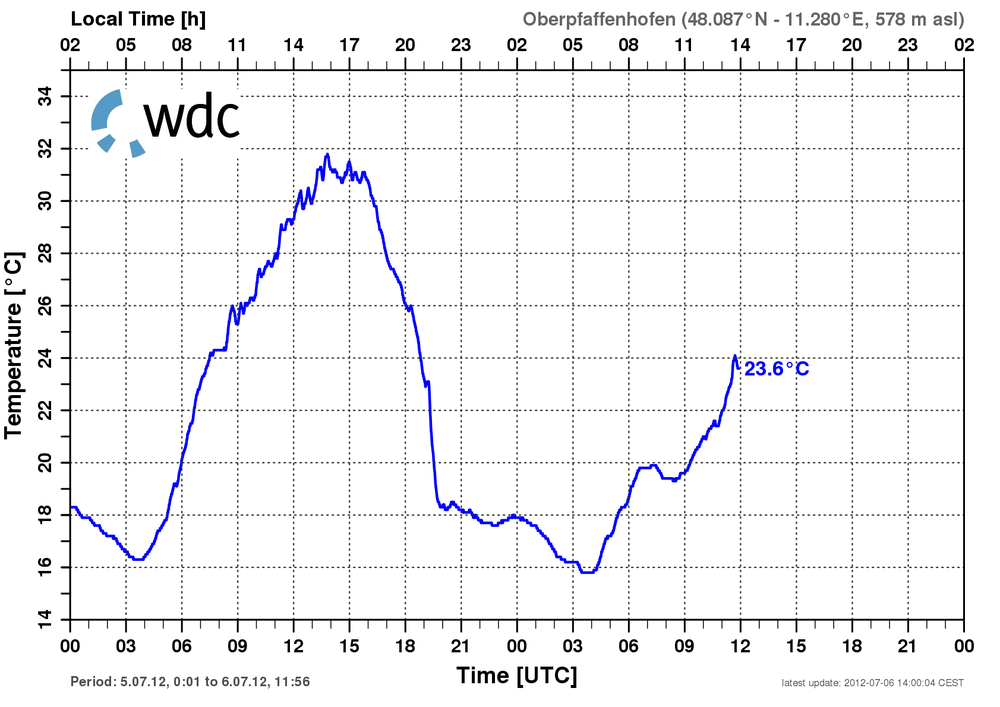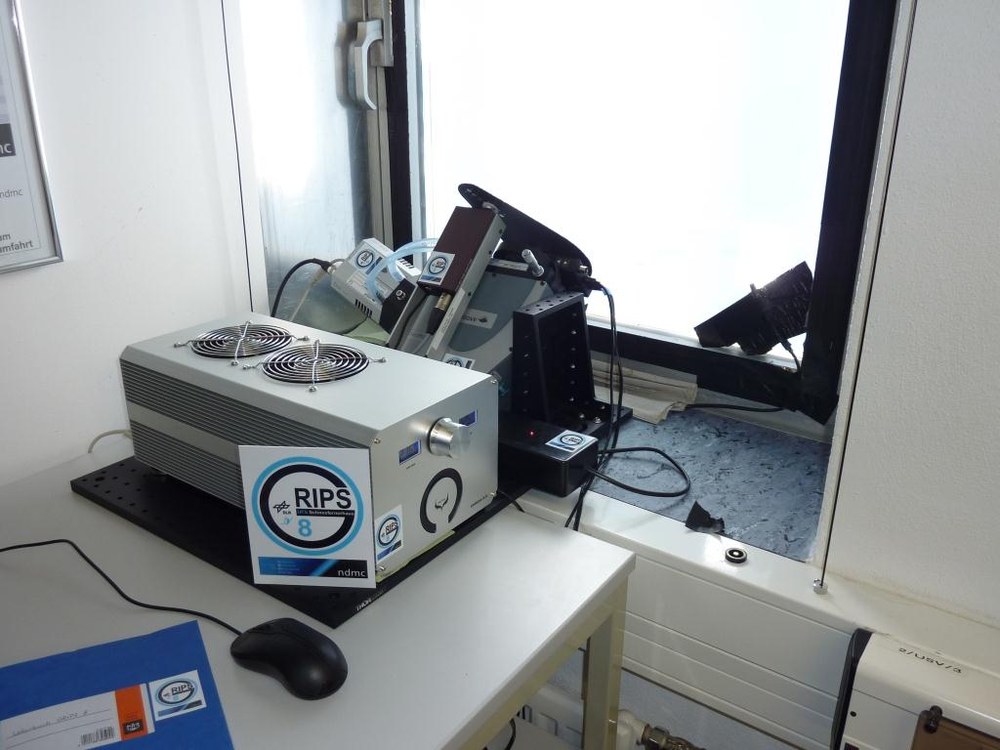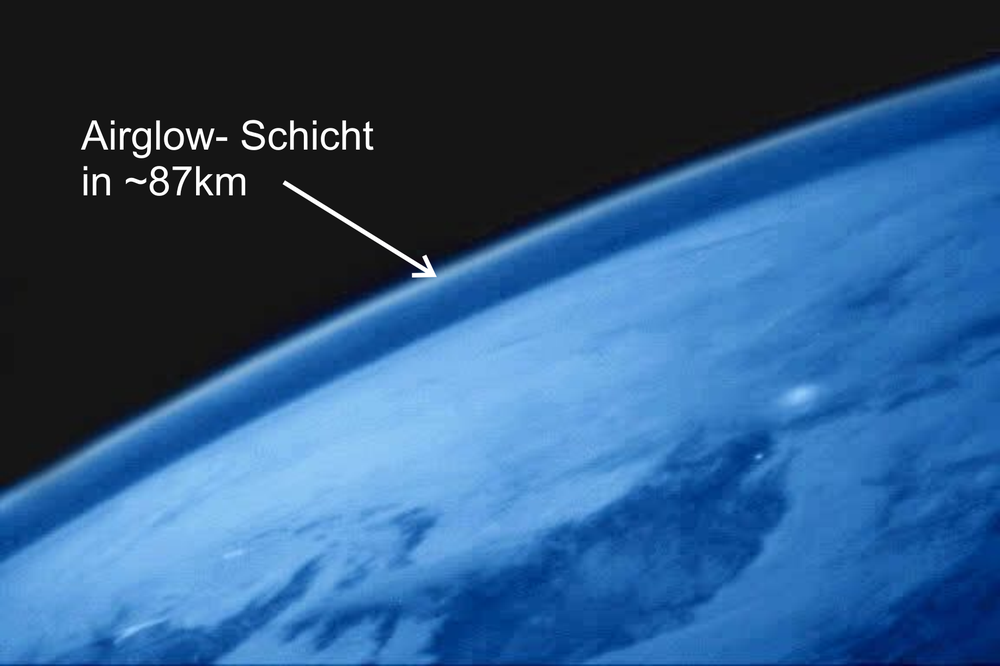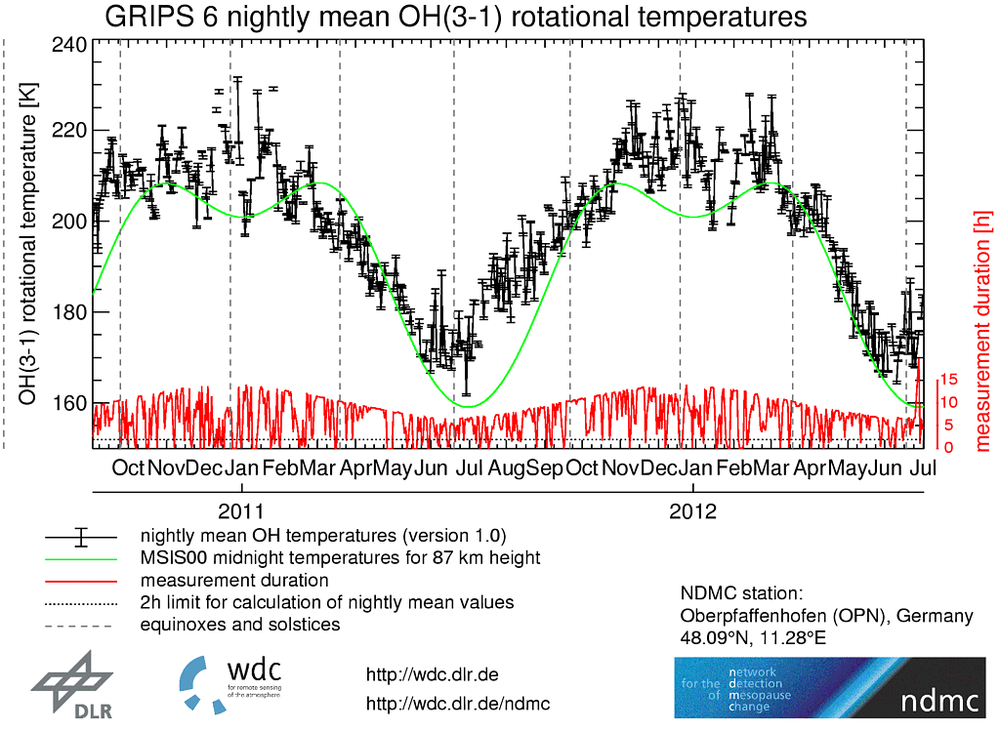Ground weather observations complement mesopause measurements
Since early summer, up-to-date weather data for Oberpfaffenhofen (temperature, pressure, precipitation, ozone etc., see figure 1) have been available on a regular basis to all interested users from WDC-RSAT (World Data Center for Remote Sensing of the Atmosphere). They are updated every five minutes and to be found under the rubric “Local Weather Oberpfaffenhofen,” suitably visualized.

This collection of weather data provides the Atmosphere unit at the German Remote Sensing Data Center with information to supplement its measurements in the mesopause (~87 km altitude), which are also routinely made at Oberpfaffenhofen. The quality of these upper atmosphere measurements is on the one hand influenced by the weather, and on the other hand also by the dynamics observed at this high altitude, for example tropospheric air pressure and flow constellations, which can now with the help of these relevant weather data be locally determined parallel to the spectrometer measurements.

The mesopause region cannot however be measured with traditional meteorological instruments. Therefore, monitoring this layer of the atmosphere is usually accomplished with the help of spectrometers of the type operated by DLR-DFD at so far six stations in five countries. The so-called GRIPS instruments (Ground-based Infrared P-branch Spectrometer, figure 2) detect the infrared radiation of the night sky known as airglow, which is generated by molecules in the mesopause region (see figure 3). This radiation provides the basis for deriving the temperature there. Not only can the dynamics prevailing at this altitude be tracked with this information; it can the same time facilitate the timely identification of climate change signals. This night sky illumination can only rarely be seen with the naked eye.

The GRIPS instruments are part of the international NDMC network (Network for the Detection of Mesopause Change). The data from this network – along with the weather data– are routinely available each day from WDC-RSAT (see figure 4), which serves as data and web portal for NDMC, provides the necessary IT infrastructure for data archiving, and organizes the NDMC Web presence.

